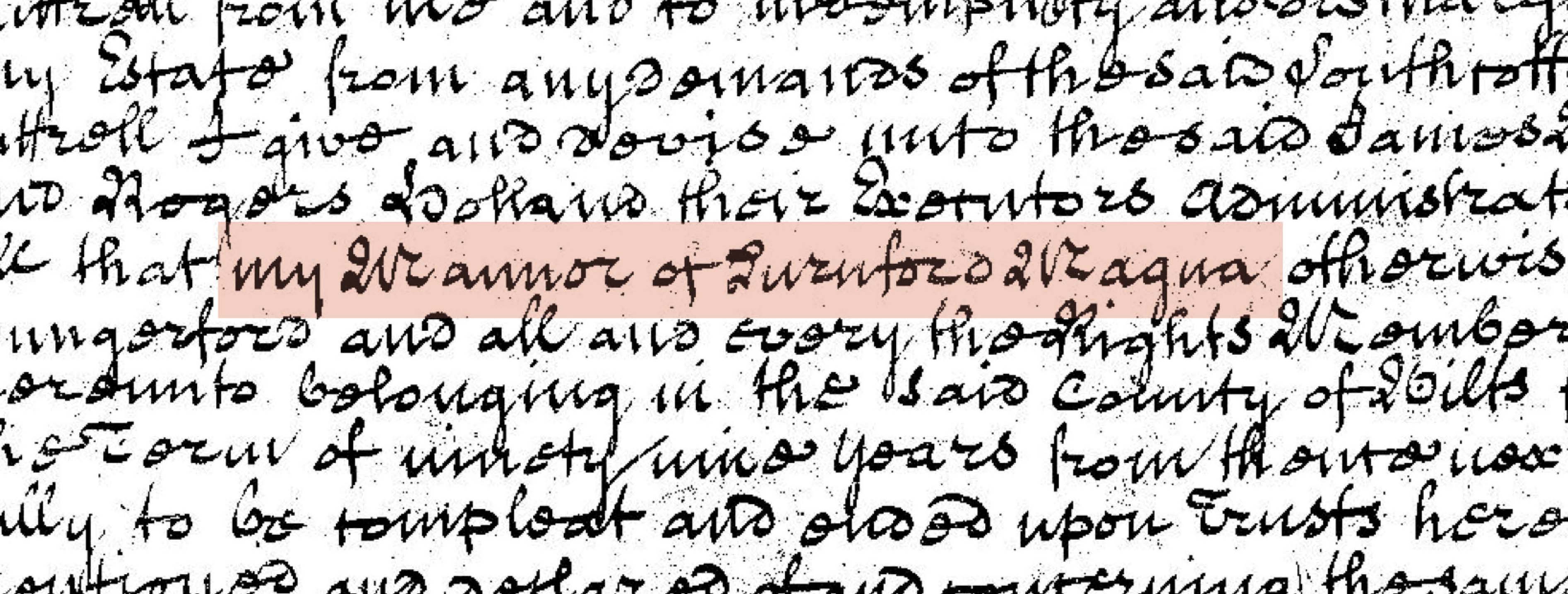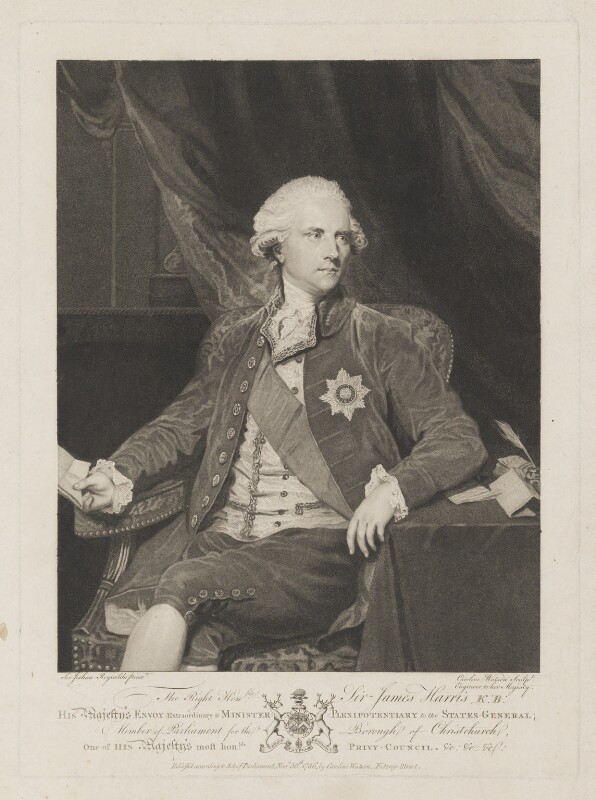Great Durnford Manor is one of the largest and most sought-after properties described in the Hungerford Deed. In the division of lands, it was awarded to Elizabeth Macie, James Smithson’s mother. Despite battling for years to obtain the manor, Macie sold it to an acquaintance within four years instead of keeping it in the family to pass on to her sons.1 The parish of Durnford is in the southern third of Wiltshire, a county due west of London, and is roughly eighty miles from the capital.
 There has been an estate at Durnford since at least 1086. Great Durnford Manor, often called Northend in early records, was first held by Richard de Clare, earl of Pembroke (1130–1176). He subinfeudated the manor, breaking it off from the rest of his estate. This allowed him to rent it out separately to tenants. John Bishop was the first renter, and from him, the property passed through five or six generations of his descendants. Sir John Blackett then purchased it and later passed it on in 1426 to Walter, Lord Hungerford (d. 1449), Macie’s ninth paternal great-grandfather. He willed it to his son Edmund, the ancestor of the Wiltshire branch of the Hungerfords. From there, it descended in a direct male line to Walter Hungerford (1675–1754), the Keates’ great-great-uncle who also owned Studley House.2
There has been an estate at Durnford since at least 1086. Great Durnford Manor, often called Northend in early records, was first held by Richard de Clare, earl of Pembroke (1130–1176). He subinfeudated the manor, breaking it off from the rest of his estate. This allowed him to rent it out separately to tenants. John Bishop was the first renter, and from him, the property passed through five or six generations of his descendants. Sir John Blackett then purchased it and later passed it on in 1426 to Walter, Lord Hungerford (d. 1449), Macie’s ninth paternal great-grandfather. He willed it to his son Edmund, the ancestor of the Wiltshire branch of the Hungerfords. From there, it descended in a direct male line to Walter Hungerford (1675–1754), the Keates’ great-great-uncle who also owned Studley House.2
Walter never fathered any children and so willed all his property to a cluster of nephews. Great Durnford was given to John Keate (1709–1756), the father of Macie, Henrietta Maria Walker, and Lumley Hungerford Keate.3 John passed it to Lumley, who died without heirs or a will in 1766, and his sisters inherited the property jointly. In the partition of family lands that the Hungerford Deed describes, Macie received Great Durnford. Shortly after she took possession of Great Durnford Manor, Macie leased it to a Mrs. Harris, mother of James Harris, the future Lord Malmesbury, who purchased the property from Macie in 1791. Despite litigating for years to establish first her right to Durnford and then her ownership of it, Macie was apparently content to rent it out and then to sell it. She devoted her money and time to renovating Weston House, the home her first husband had only left to her for the remainder of her life, and which she could therefore not bequeath to either of her sons.4
 After Macie’s death, Smithson and Lord Malmesbury tussled over Durnford, and Smithson renewed an offer his mother had previously made to buy back the estate, having changed her mind about the sale. This came to nothing.5 Given that Malmesbury had built a manor home on the property beginning the year after his purchase, it is not surprising that a decade later he would refuse to sell. Lord Malmesbury passed Durnford down through four generations, before a descendant sold the manor house and park to John Pickney, whose widow sold the property in about 1907 to the Tryon family. The remainder of the Durnford estate was purchased by the Tryons in about 1912.6 In 2013, the estate, marketed as an ideal game-hunting ground of 1,000 acres, was put up for sale.7
After Macie’s death, Smithson and Lord Malmesbury tussled over Durnford, and Smithson renewed an offer his mother had previously made to buy back the estate, having changed her mind about the sale. This came to nothing.5 Given that Malmesbury had built a manor home on the property beginning the year after his purchase, it is not surprising that a decade later he would refuse to sell. Lord Malmesbury passed Durnford down through four generations, before a descendant sold the manor house and park to John Pickney, whose widow sold the property in about 1907 to the Tryon family. The remainder of the Durnford estate was purchased by the Tryons in about 1912.6 In 2013, the estate, marketed as an ideal game-hunting ground of 1,000 acres, was put up for sale.7
Smithson and Macie may well have seen the beautiful Georgian mansion that Malmesbury built, and it would look very familiar to them if they were able to see it now. Additions and modern improvements have been made, but a visitor today would see largely what visitors at the turn of the 19th century would have, with nary a clue to Macie’s avid pursuit of the property and her tussle with her sister, Walker.
Footnotes
1 Heather Ewing, The Lost World of James Smithson: Science, Revolution, and the Birth of the Smithsonian (New York: Bloomsbury, 2007), 21. Back to text
2 A.P. Baggs, Jane Freeman, and Janet H. Stevenson, “Parishes: Durnford,” in A History of the County of Wiltshire: Volume 15, Amesbury Hundred, Branch and Dole Hundred, ed. D.A. Crowley (London: Victoria County History, 1995), 79–93. British History Online, accessed July 27, 2021. Back to text
3 Will of Walter Hungerford of Calne, Wiltshire, June 26, 1754, PROB 11/809/256, The National Archives, London. Back to text
4 Ewing, The Lost World of James Smithson, 21. Back to text
5 Ewing, The Lost World of James Smithson, 205–206. Back to text
6 Baggs, Freeman, and Stevenson, “Parishes: Durnford,” British History Online. Back to text
7 Tory Kingdon, “English sporting estates: exacting buyers in hunt for perfection,” Financial Times, January 22, 2016. Back to text
